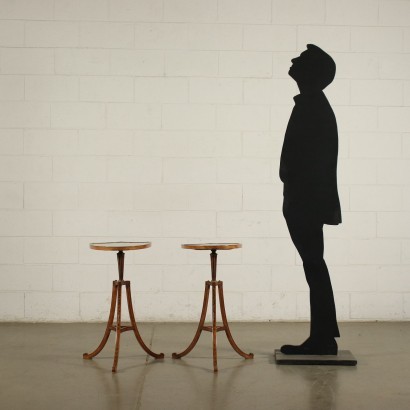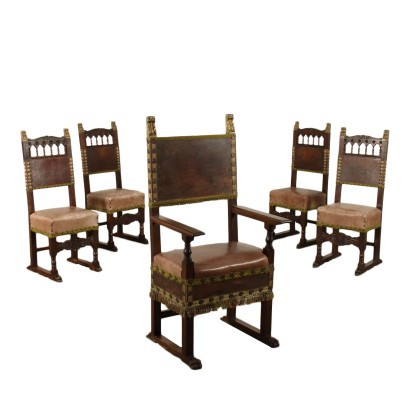Pair of Giorgio IV Coffee Tables
Features
Style: George IV (1760-1830)
Age: 19th Century / 1801 - 1900
Origin: England
Main essence: Satinwood , Rosewood
Description
Pair of Giorgio IV coffee tables made by transforming pole screens. Supported by a turned and tapered central baluster, resting on three saber legs connected by crossbars. Veneered in citronnier painted with phytomorphic motifs on the legs and dark threads, the shelves with the characteristic shield shape have rosewood borders, while in the upper part a glass top protects the underlying embroidered silk, enriched with pearls and with a central medallion with female figures .
Product Condition:
Product in fair condition showing some signs of wear.
Dimensions (cm):
Height: 66
Width: 35
Depth: 41
Maximum size (cm):
Width: 46
Depth: 47
Additional Information
Style: George IV (1760-1830)
It is part of the so-called "Georgian" period.This term designates the stylistic activity that took place in England between 1714 and 1830 and included the reigns of George I, George II, George III and George IV.
It is characterized, at its beginnings, by an attitude of reaction to the Baroque.
Precise characteristics and distinctions of this style are not clearly identifiable in the furniture created in England in the eighteenth century.
In the first half of this century, cabinet-making and the products of the various categories of English applied art were affected by the continuous changes in taste and manifested, in the diversity of trends and influences, the uncertainty of a precise stylistic orientation.
In the second half of the eighteenth century, the sensitivity and exceptional ingenuity of four strong personalities, destined to guide the English taste and customs of the time, intervened in the second half of the eighteenth century: Th. Chippendale, R. Adam, G. Hepplewhite and Th. Sheraton.
Find out more with our insights:
FineArt: Tallboy George II, England c.1730
FineArt: Pair of Irish Mirrors, in George III Style, second half of the 19th century































